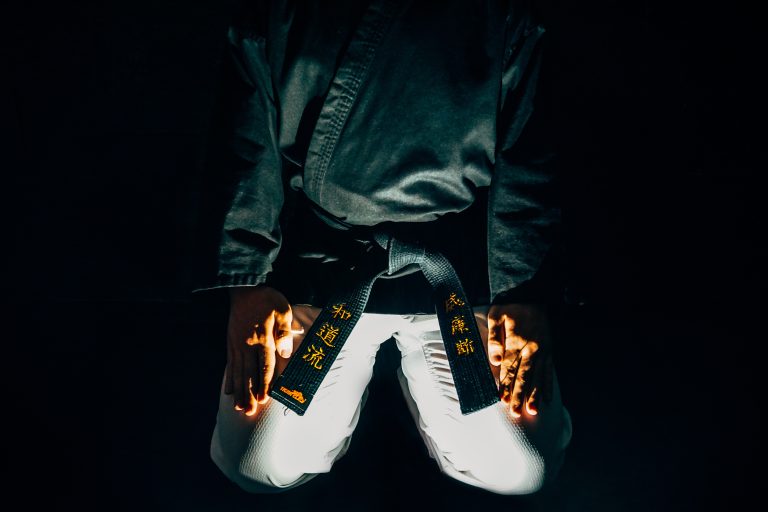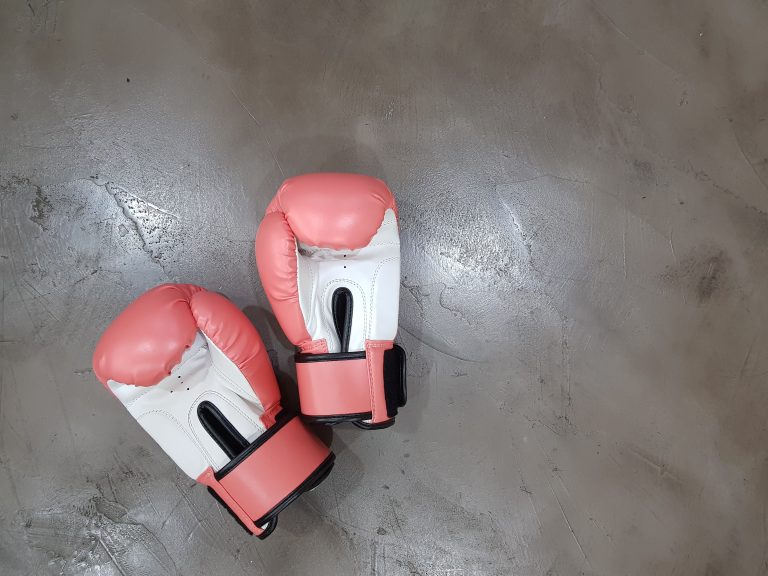Common Words Used in Karate
Karate is a form of martial arts that originated from Okinawa, Japan, and has now become a popular practice globally. This art form is defined by its use of punches, strikes, and kicks, coupled with intense concentration and focus. The practice involves learning a range of moves and positions, which are often accompanied by specific words and phrases. To help you understand the discipline of Karate better, this article will outline some of the most common words used in Karate.
Dojo
Dojo is a Japanese term that refers to the training hall or studio where Karate lessons and activities are held. This facility is usually designed to cater to the needs of the students, with suitable flooring and equipment for training. The dojo is considered a sacred space by Karate practitioners, and it is generally advised to show respect to the facility by removing shoes before entering and bowing to the instructor.
Karate Uniform
The Karate uniform is called ‚Gi‘ and is typically made of thick cotton. The uniform ensures that the student is comfortable while practicing and also absorbs sweat. The Karate uniform consists of three parts; a jacket, pants, and a belt. The color and width of the belt indicate the student’s level of proficiency, with the white belt being the starting level, gradually moving up to black, which is considered as a master level.
Kiai
A kiai is a shout or yell that is often used during Karate practice. The yelling is usually used to signal the execution of a move or to show the intensity of a strike. It allows the martial artist to focus and become more alert. A kiai also serves as a warning for the opponent, indicating that an attack is imminent.
Kata
Kata is a series of pre-arranged movements that simulate a real combat situation. The movements are performed in a sequence and are designed to teach the student how to execute different techniques effectively. A Kata usually consists of blocks, strikes, kicks, and throws, which are practiced repeatedly until the student can perform them smoothly and correctly.
Kumite
Kumite is a term used to describe sparring or fighting in Karate. It involves two Karate practitioners engaging in a simulated combat situation. The purpose of kumite is to test the student’s ability to execute techniques learned in Kata against a real-life opponent. Kumite is typically done with protective gear, and safety measures are taken to prevent injury.
Sensei
Sensei is a Japanese term used to describe a Karate teacher or instructor. The term is also used to describe someone who has mastered a particular skill and has become a leader in that field. In Karate, the Sensei is often viewed as a mentor, a guide, and a role model for students.
Understanding Common Words Used in Karate
Karate is a Japanese martial art that originated in Okinawa, Japan. It is a popular form of self-defense that involves various striking and blocking techniques.
Like any sport or activity, karate has its own language, which can be challenging to understand for those who are new to the sport. In this post, we will go through some of the most frequently asked questions about the common words used in karate.
What is a dojo?
Dojo is a Japanese term that refers to a training hall or place of practice in martial arts. It is a place where students come to learn and practice karate with the guidance of a sensei (teacher). The dojo is usually a place of respect, and students are expected to follow a certain code of conduct.
What does Sensei mean?
Sensei is a Japanese term that refers to a teacher or mentor in martial arts. It is a title of respect given to someone who has achieved a certain level of proficiency in their craft. In karate, the Sensei is someone who guides and inspires students to become better at the sport.
What is a kata?
A kata is a sequence of movements that are performed in a specific order. It is a form of practice in karate that involves a series of techniques, including punches, strikes, kicks, and blocks. Katas are designed to help students develop muscle memory, improve their technique, and understand the physics of each movement.
What is a belt system in karate?
The belt system is a ranking system used in karate to indicate a student’s level of proficiency. It is a way to track the student’s progression through the various levels of training. The belt system starts with white (beginner) and progresses to yellow, orange, green, blue, brown, and black (the highest level).
What is a kick?
A kick is a striking technique used in karate, where the leg is extended to hit the opponent. There are different types of kicks in karate, including front kick, roundhouse kick, side kick, and hook kick.
What is a punch?
A punch is a striking technique used in karate, where the hand is extended to hit the opponent. There are different types of punches in karate, including the straight punch, uppercut, and hook punch.
What is sparring in karate?
Sparring is a form of practice in karate that involves controlled fighting with a partner. It is a way to apply the techniques learned in class in a safe and structured environment. Sparring involves wearing protective gear, including headgear, gloves, and mouthguards.
What is a block?
A block is a defensive technique used in karate to protect against an attack from an opponent. There are different types of blocks in karate, including the high block, low block, and inside-outside block.
What is Kumite?
Kumite is a form of sparring in karate that involves free-style fighting with an opponent. It is a way to test the techniques learned in class in a more realistic setting. Kumite involves scoring points by striking or kicking the opponent.
How to Learn and Use Common Words in Karate
Learning karate requires not only mastering its moves, but also understanding the terminology used by practitioners. Every beginner, typically, starts with learning the basic vocabulary of karate. If you are interested in learning karate, or have already started attending classes, this guide will provide you with the essential words, phrases and expressions used in karate that you need to know.
Step 1: Learn Basic Terms
To start with, get yourself familiar with karate basics. Here are some common Japanese terms which will be a part of your initial training:
-Kihon: This means “basics” and forms the foundation of your training in karate. The fundamental techniques such as punches, kicks, blocks, and stances fall under this category.
-Kata: A sequence of movements or techniques that are arranged in a certain sequence.
-Kumite: Refers to sparring or fighting techniques, which can be either pre-arranged or free-style.
-Sensei: This term refers to a teacher or instructor in karate. It literally means “one who has gone before.”
-Dojo: This means “the place of the way,” or the training hall where karate is practiced.
Step 2: Practice Pronunciation
Pronunciation is a challenging aspect while learning karate terms. Here are some tips to help you improve your pronunciation:
-Break the words down into syllables and practice each one separately,
-Listen to your Sensei or other practitioners and copy their pronunciation,
-Practice regularly until you feel comfortable pronouncing the terms.
Step 3: Advanced Terms and Phrases
As you progress in your karate training, you will encounter more advanced terms and phrases. Here are some common ones that you can keep in mind:
-Waza: This is a technique or move in karate.
-Shihan: This is a senior instructor and is employed by a karate organization.
-Sempai: This is a senior student who helps beginner or junior students in their training.
-Mokuso: This means meditation, which is often done at the beginning or end of a class.
-Kime: Refers to focus, and is usually used in relation to a specific technique or move.
Step 4: Practice Application in Training
Learning karate vocabulary doesn’t end with memorizing words and phrases. It is essential to be able to apply the newly learned words during training. A few ways to practice using karate terms during training are:
-Repeat the moves out loud while practicing,
-Ask your Sensei for clarification or feedback on your usage of karate terms,
-Find a partner to practice communicating techniques and moves verbally.
Step 5: Use Reference Materials
Finally, refer to related materials such as books, videos, or online resources to enhance your understanding of karate terminology. Some valuable resources include:
-Karate-related websites, such as karatebyjesse.com or karateforums.com,
-Books on karate such as “Karate Do: My Way of Life” by Gichin Funakoshi,
-Videos or YouTube channels of famous karate practitioners and instructors such as Joe Lewis, Hidetaka Nishiyama, and Hirokazu Kanazawa.
In conclusion
Learning karate vocabulary is as essential as learning the physical moves. Knowing the jargon will make you a better-rounded karate practitioner, and will help you communicate better with your training partners and martial arts community. Remember to start with the basics, practice your pronunciation, learn the advanced terms and use the words in the right context during training. Additionally, using reference materials to enhance your knowledge of karate terms will be a valuable investment in your training journey.
Inhaltsverzeichnis





